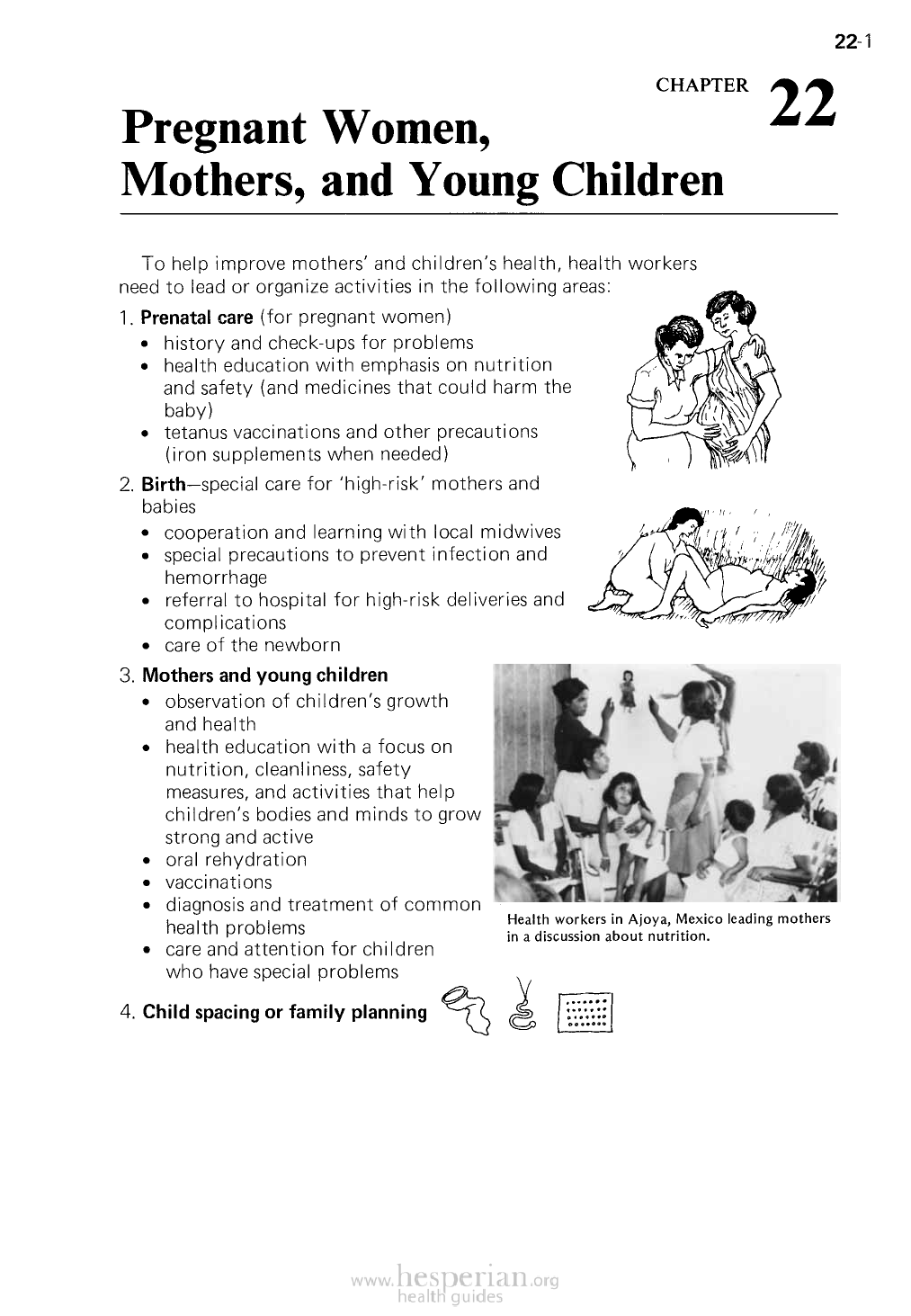
Pregnant Women,
CHAPTER
22Mothers, and Young Children
To help improve mothers’ and children’s health, health
workers need to lead or organize activities in the
following areas:
1. Prenatal care (for pregnant women)
• history and check-ups for problems
• health education with emphasis on nutrition
and safety (and medicines that could harm the
baby)
• tetanus vaccinations and other precautions
(iron supplements when needed)
2. Birth-special care for ‘high-risk’ mothers and
babies
• cooperation and learning with local midwives
• special precautions to prevent infection and
hemorrhage
• referral to hospital for high-risk
deliveries and complications
• care of the newborn
3. Mothers and young children
• observation of children’s growth and
health
• health education with a focus
on nutrition, cleanliness, safety
measures, and activities that help
children’s bodies and minds to grow
strong and active
• oral rehydration
• vaccinations
• diagnosis and treatment of common
Health workers in Ajoya, Mexico leading mothers
in a discussion about nutrition.
health problems
• care and attention for children who have special problems
4. Child spacing or family planning
In this chapter, we do not go into the details of each of these areas. They are
discussed in Where There Is No Doctor, Where Women Have No Doctor, and in
many other books on mother and child health. Instead, we look at common difficulties
that health workers encounter in promoting mother and child health activities. We
explore approaches to training that help avoid or overcome some of these difficulties.
And we give examples of methods and aids that health workers can use to help
mothers learn about the health needs of their children.